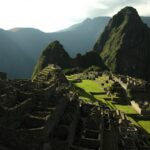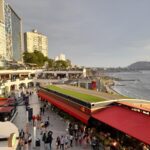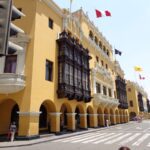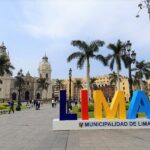If you are traveling to Cusco, Peru, and want to explore the Sacred Valley (beyond just Machu Picchu!), then Pisac should be high on your list.
Are you planning to visit Pisac?
Check out the best tours from Cusco to Pisac:
1. Group tour to Pisac: Besides Pisac, visit Ollantaytambo, Maras, Moray and Chinchero
2, Private tour to Pisac: Includes a visit to Ollantaytambo and Awana Kancha.
Best hotels in Pisac:
1. Pisac Inca Guest House (Mid-Range)
2. Pisac Inn (Mid-Range)
3. Rumi Lodge Pisac (Budget)
4. Sonqo Andino Hospedaje Medicina (Budget)
Pisac is a town in the Sacred Valley famous for two things. First, for its Inca ruins (for me, the Pisac ruins are one of the nicest in Peru). And second, for its handicrafts market. You might have heard of the Pisac Sunday Market. So it’s this same market, but it now takes place every day and not just on Sundays.
There are also some hiking opportunities if you want to explore the nature around Pisac. Pisac also has several restaurants and cafes, as well as shops, but still a quiet and local atmosphere.
Personally, I think it’s one of the towns you shouldn’t skip in the Sacred Valley, along with Ollantaytambo. Many foreigners think so as well, so much that there’s a big expat community in Pisac (more on that below).
Things to Do in Pisac
Exploring Pisac Town
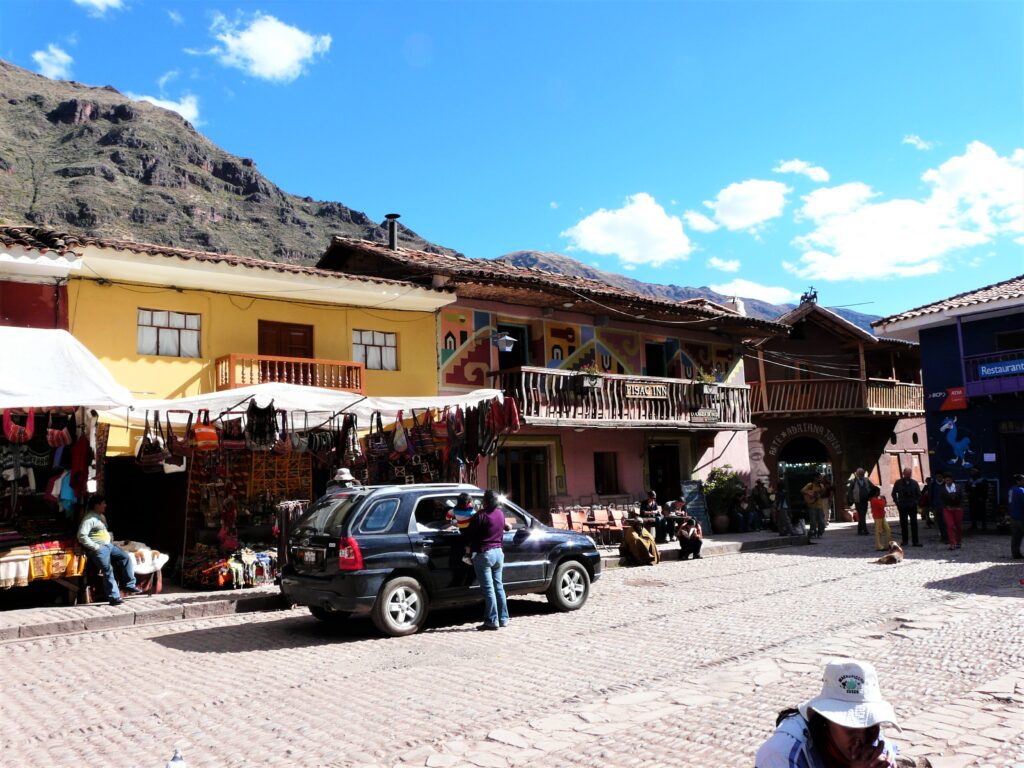
Wandering around its streets is one of the first things you should do in Pisac. Visit the square and look at people go about on their daily lives.
Pisac town is small, but its cobblestone streets are lined with cute cafes, restaurants and shops.
Most of the shops will sell typical Peruvian handicrafts or textiles, so it’s a great place to get some sounvenirs, but you will also find some shops selling some other interesting things.
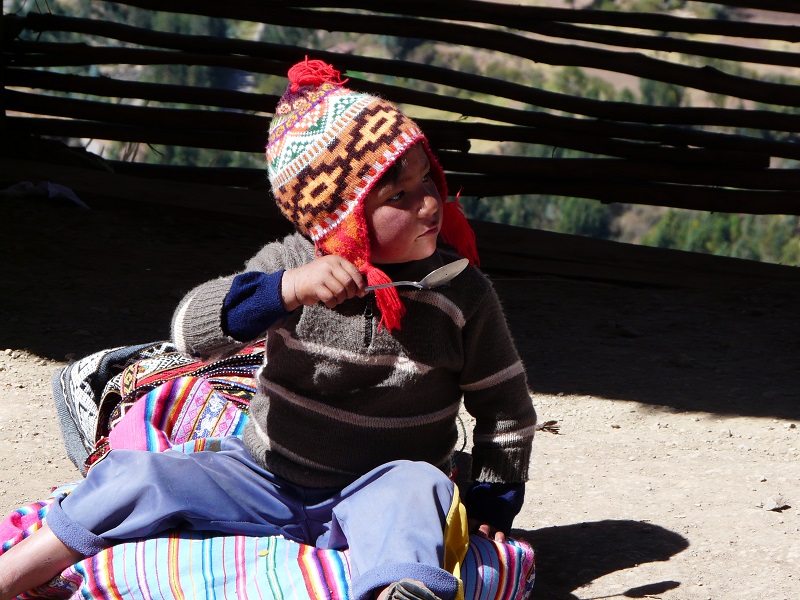
For example, during my last visit to Pisac, I have stumbled upon a shop selling gorgeous Shipibo (a tribe from the Amazon) textiles to hang up on the wall. There was also a shop selling rapé, a tobacco that is inhaled during some traditional ceremonies.
If you are into natural products, you will also be able to find shops selling native organic food products and superfoods, among local essential oils, palo santo (a delicious-smelling Peruvian incense) and natural soaps.
Pisac Ruins

If you are visiting Cusco, you will probably explore at least one more archaeological site besides Machu Picchu. But there are so many ruins in Cusco besides Machu Picchu that are worth visiting. If you are like me, though, after a while they all tend to blend, so maybe you won’t want to visit that many.
That being said, in my opinion, the Pisac ruins are among the top 3 ruins to visit in Cusco besides Machu Picchu (the other ones would be Sacsayhuaman in Cusco city and the Ollantaytambo ruins).
So of course, visiting the ruins are one of the top things to do in Pisac. They are actually the reason for which Pisac is called Pisac. Pisac (also spelled “Pisaq”) comes from the quechua word “pisaqa”, which means “partridge”. If you look at them from above, you will see that the ruins were built in the shape of this bird.
The ruins are located on the top of a hill, so you won’t only get to see the ruins, but also great views of the Sacred Valley.
Like in most ruins in Cusco, you will find several agricultural terraces which were used since the times of the Incas. You will also find the Intihuatana, an astronomical observatory which was also considered the temple of the Sun. And several other structures like small buildings and water canals.
How to Get to the Pisac Ruins
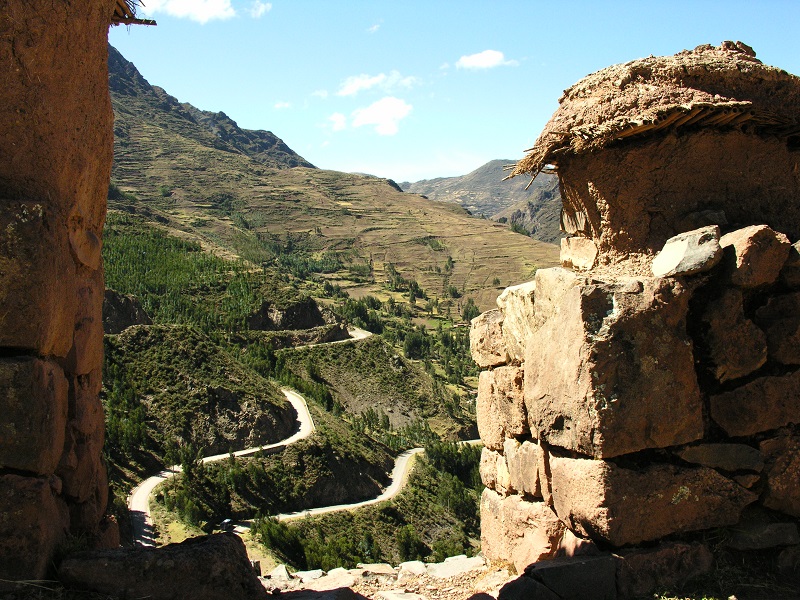
If you are taking a tour from Cusco, the bus will leave you right at the ruins.
If you are not taking a tour from Cusco, there are two ways of getting from Pisac town to the ruins.
The best option is to take a taxi, which will charge you between 20 and 30 soles, one-way. You can either return by foot, or you can negotiate with the taxi driver so that he can wait you there while you visit the ruins and then bring you back.
If you decide to walk back, the walk will take you around 2 hours. The views are nice and you will be walking among terraces, so if you want to get to know the nature of Pisac better this is a good option.
Otherwise, you can also hike both ways, which is the second option. The downside of this is that the way to get there is uphill. That means the way to the ruins might take you around 3 hours. And remember that you will be walking in high altitude, so there’s risk of altitude sickness or at least more fatigue than usual. Also, sun is generally strong so make sure to wear a hat or cap.
If you are up for it, it can be a full day plan, since just getting there and back will take you around 5 hours, not counting the time that you will spend there.
Pisac Ruins Ticket Price
To visit the ruins you will need the Boleto Touristico (Tourist Ticket) that allows you to enter several other archaological centers and museums in the Cusco area.
The full ticket allows you to enter every main archaeological site or museum within a period of 10 days, and it costs 130 soles. It doesn’t include the entrance to Machu Picchu though.
Otherwise, you can get the partial ticket, which is about half the price (70 soles, or around 19 dollars at the time of writing). With that one, you can also enter Ollantaytambo, Chinchero and Moray ruins.
Pisac Market
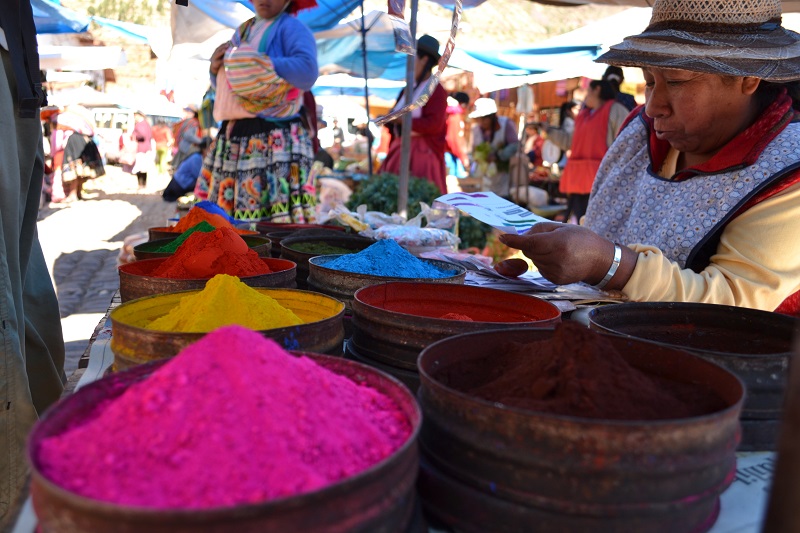
Besides the Pisac ruins, the other top thing to do in Pisac is visiting the market. The Pisac market is a lively and colorful open air market, located at the main square and branching out to the adjacent streets.
The main day of the Pisac market used to be on Sundays, when a big amount of vendors gathered with their goods. The rest of the week there was still a market, but smaller, and they mainly just sold handicrafts.
At the moment of writing (2023), due to the consequences of the pandemic, the Pisac Sunday market doesn’t really exist anymore, at least for now. Now the market is the same every day, and it’s smaller than it used to be.
Before, besides handicrafts, you could also find many fruits and vegetable stalls, selling native products. Lots of different kinds of potatoes, several other Andean tubers, local fruits like camu-camu and pacay, and more. Of course you can still find that at the normal market, just not at the square anymore.
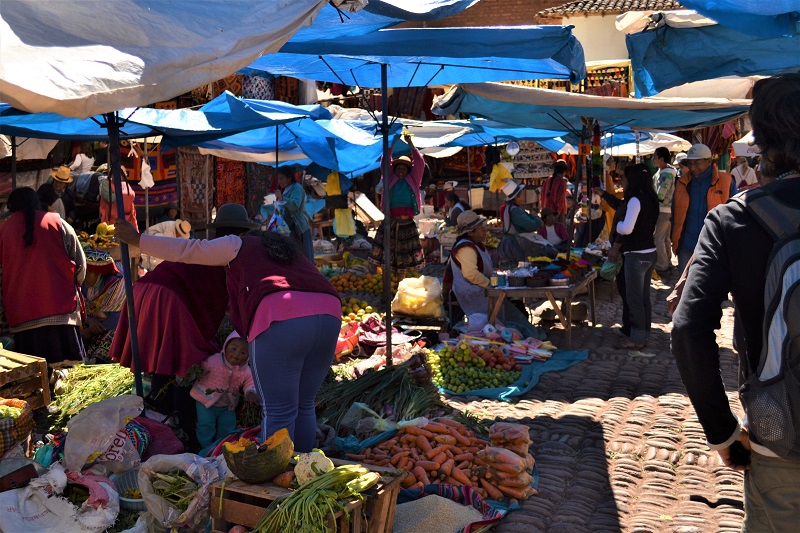
Same goes for the food stalls. Before, you could find stalls selling all kinds of Peruvian dishes. Also stalls selling popular Peruvian drinks, like chicha de jora, an alcoholic fermented corn drink that is very popular in the Andes (if you are interested in trying chicha de jora anyway, you can visit a chichería in Pisac, traditional bars where people go to drink chicha).
But even though the Pisac market is different nowadays, it’s still a great place to get souvenirs from Peru. You will find alpaca clothing, decorative textiles, bags, pottery, instruments, and more.
The market is also famous for its silver jewelry stands. You will find many nice items made in silver decorated with colorful stones. I have a pair of really nice llama earrings from the Pisac market.
Other Traditional Markets in the Sacred Valley in Peru
If you are looking into visiting other local markets in the Sacred Valley, I recommend you to visit the Chinchero market. It’s not so close to Pisac (a bit over an hour away), but only 45 minutes away from Cusco. Chinchero is very famous for its textiles, and they have a market every Friday. It’s a great place to get colorful carpets, bags and sweaters.
Felipe Marin Moreno Botanic Garden
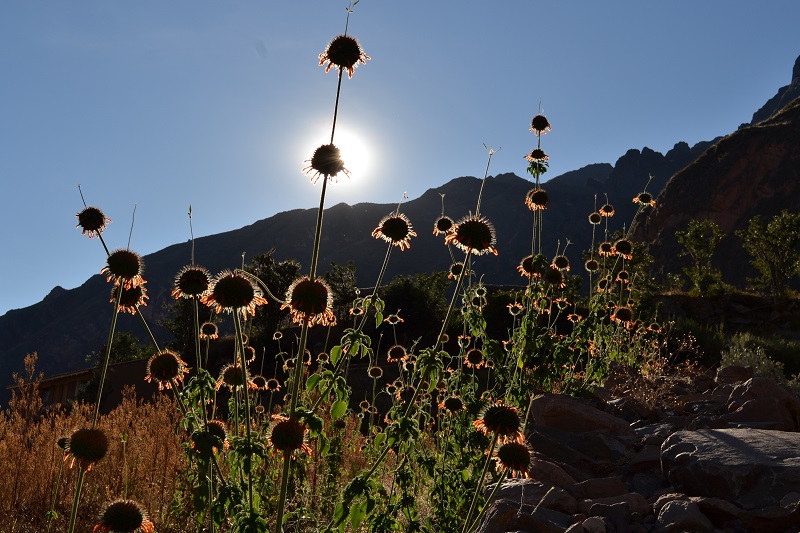
If you are going to spend more than a day in Pisac and are looking for more things to do, visiting this hundred-year-old botanic garden can be a good idea.
The garden is located in the Hotel Casa Hacienda Florencio, and it’s actually a small garden. But if you are interested in seeing some native plants of Peru (and non-native ones as well), the Pisac botanic garden is worth a visit.
At the garden, you can see some medicinal plants, exotic and tropical plants, orchids and more. There are also a big selection of cacti, one of the biggest that you can find in Peru. It also has a small museum dedicated to potatoes. You can even see 200 varieties of potato plants!
The entrance to the Pisac botanic garden costs 6 soles, but it’s free for the people staying at the hotel.
Festivities in Pisac
Are you visiting Pisac in July? If so, then you can’t miss the Virgen del Carmen in Pisac, for a chance of witnessing a local and lively religious and cultural festival in Peru. Generally, in these kind of festivals, the town becomes super alive with music and typical dances (and a lot of alcohol as well!).
This festival is dedicated to the Virgin of Carmen, to whom people in the Cusco region are very devoted. The celebrations in her honor take place on the eve of July 16th, which is her central day, and continue until the 18th. So you have several days to try to make your trip to Pisac coincide with.
On those days, locals take a statue of the Virgin of Carmen from a nearby community, to the church of Pisac. Their procession is accompanied by lots of dancers groups from different communities, music, masses and firecrackers. For sure something you shouldn’t miss if you are in Cusco around those dates!
Interesting fact: in Pisac, same as in other parts of the highlands in Peru, it’s a great honor to host and pay for the annual festivities. People in the town save up for a long time for a chance to be the “butler” of the festivity. They organize the celebrations and may pay for food and drinks for the whole community.
How Long to Stay in Pisac?
Most tourists visit Pisac on a day trip from Cusco, which is a very easy option, since there will be several tours taking you either just to Pisac or as a part of a Sacred Valley tour. The tours will take you both to the market and the ruins, so you will see the two main attractions.
If you have some more time, it’s a nice town to consider spending the night. That way, you can take your time to visit the ruins at your own pace. It’s actually relatively quiet when the tourist buses are gone, and you feel that you have the whole place for yourself.
The two times that I have visited I have spent a couple of nights there and enjoyed the chill atmosphere of the town. Pisac is very small though, so it’s a place where you can enjoy the atmosphere of being in a small town in Peru being surrounded by nature rather than filling your day with activities. If you are traveling slowly, one or two nights here will be okay.
Hippy Pisac
But locals and tourists are not the only people in this town. The beauty of the Sacred Valley and the mysticism of the ancient Inca culture are a magnet for people looking for an alternative lifestyle.
And while Limenians who want to escape the capital and move to Cusco tend to spread over the different areas of the Sacred Valley, a lot of foreigners tend to concentrate in Pisac. Pisac is probably the town in the valley with the most number of expats, actually.
It’s generally people who are looking to live in connection with nature, and who seek for a relaxed and usually a more alternative lifestyle as well.
So you if you stay for a couple of days you will notice the many expats living in Pisac, which have earned the town a reputation of a hippy location in Peru. That’s the reason that you will find several alternative ceremonies, classes and workshops going on, at all times of the year.
For example, you will find that they offer several ayahuasca and San Pedro (traditional hallucinogenic drinks in Peru) ceremonies. But also a mix of both ancient and new age non Peruvian traditions as well, like cacao ceremonies, ecstatic dancing, reiki and Tantra workshops, etc.
Altitude of Pisac, Peru
Like the rest of the towns of the Sacred Valley, Pisac is at a high altitude, but less high than Cusco city is.
Pisac is located at 2972 meters of altitude, while Cusco is at 3399 meters, so if you have already spent some time in Cusco, you will be fine.
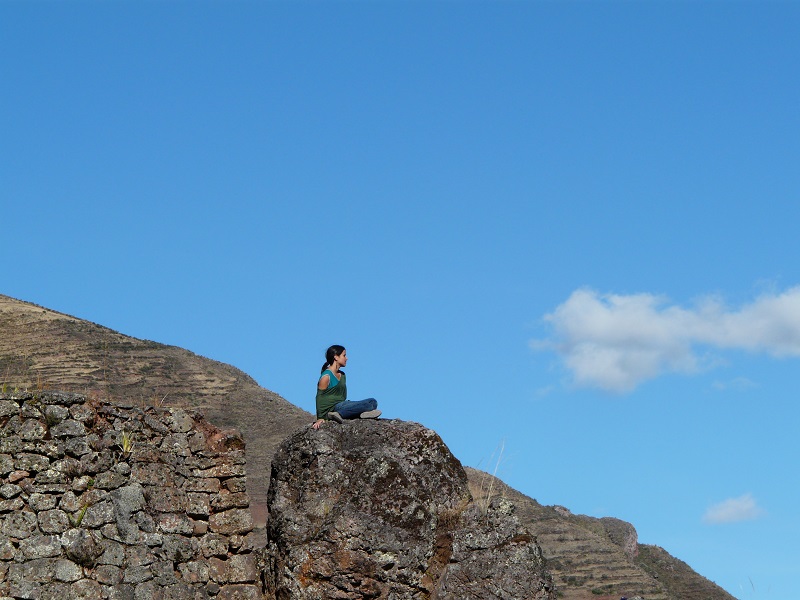
For that same reason, spending time in Pisac (or any other Sacred Valley town) acclimating your body to the altitude before visiting higher altitude cities in Peru (like Cusco city) can be a good idea.
The Pisac ruins are at a higher elevation than the town, at 3300 meters of altitude. That’s the reason why walking from the town to the ruins can potentially be a little tough on your body if you aren’t totally acclimated yet.
How to Get to Pisac, Peru
Pisac Tours
Most people visit Pisac on full day tours that take you all around the Sacred Valley from Cusco. In the tours, usually you combine Pisac with a visit to one or more Sacred Valley towns, like Maras, Moray, Chinchero or Ollantaytambo. It’s a lot of places to visit in one day, and if you only have a day to visit the valley it can be a great option.
Here are some good options of tours to Pisac:
Book a group tour to Pisac: This tour includes a visit to Ollantaytambo, Maras and Moray (the salt mines and ruins) and Chinchero.
Book a private tour to Pisac: This private tour will also take you to Ollantaytambo and Awana Kancha. In Awana Kancha you can visit an animal sanctuary of rescued animals, especially condors. You will also be able to see alpacas, llamas and vicunas.
Taxi from Cusco to Pisac
If you do have a little bit more time, you can visit Pisac without a tour. The easiest way would be to hire a taxi from Cusco to Pisac. This will be the best option if you are a group of friends or a family, or if you want to travel more comfortably.
Taxis will be between 50 and 80 soles one-way. You can either negotiate to do a round trip, or you can spend the night at Pisac.
Public Transport from Cusco to Pisac
Otherwise, you can head to Calle Puputi (Puputi street), which is just a 15 to 20-minute walk from Cusco main square.
From there, you can take a colectivo (minivan), which will take you to Pisac in 45 minutes. There is no set schedule for the departures, the colectivos just leave once they are full. This usually is around every 15 minutes. The cost is 7 soles.
There are also buses that can take you from Cusco to Pisac, but buses are older and slower. Also, since they are bigger they take much longer to get full, so they aren’t necessarily the best option. Still, they are cheaper, so they’re a good option if you want to save a couple of soles.
Where to Stay in Pisac
Pisac is full of guesthouses and hotels, and most of them provide a very high quality in return for the price. That is, nicely decorated rooms with Andean design, beautiful views of the valley or a garden, and some of them include breakfast as well.
To make it easier for you, here I’ve made a selection of some of the best hotels in Pisac.
Pisac Inca Guest House – Mide-Range
The Pisac Inca Guest House is located on the outskirts of the town. It’s very quiet and has great views of the mountains.
Rooms are colorfully decorated, have good bedding, heating and are thoroughly cleaned every day. It has two gardens and lounges overlooking them. There’s a fully-equipped kitchen, with filtered water and herbal teas available. Wifi is good.
Breakfast is great and is served until 10am. They also offer laundry service.
Book a room at the Pisac Inca Guest House here.
Pisac Inn – Mid Range
The Pisac Inn is centrally located on the main square, in an ideal location to explore the market, restaurants and shops.
Rooms are small but cozy, and they have a spacious wardrobe. They have a bedside heater and there’s a hair dryer in the bathroom, which can be handy in the cold weather. Bottled water is supplied daily.
There’s a restaurant at the hotel which is open the whole day and has great food. Wifi is fast and reliable. They also offer a laundry service.
Book a room at the Pisac Inn here.
Rumi Lodge Pisac – Budget
The Rumi Lodge Pisac is the perfect place if you want to be out of town in a quiet space in nature. The views over the valley are beautiful and it feels like a retreat into the magical mountains of the Andes.
Rooms at the Rumi Lodge Pisac are comfortable and built out of typical adobe bricks they use in the Andes in Peru. The showers have very hot water. There is also well equipped shared kitchen, where you can also find filtered water.
You can easily reach the town which is a 20-minute walk away, or or a 5-minute ride away by mototaxi (tuktuk, 4 soles)
Book the Rumi Lodge Pisac here.
Sonqo Andino Hospedaje Medicina – Budget
The Sonqo Andino is a very small guesthouse with just a couple of rooms, with a view to a garden.
They offer temascal (a traditional sweat lodge), San Pedro cactus ceremonies and other related practices. If you are interested in taking part of some events in the alternative Pisac circuit, this is a good choice.
Rooms are spacious and have views of the mountains.
Book a room at the Sonqo Andino Hospedaje Medicina here.
Final Thoughts
Pisac is totally worth if you want to get to know better the Sacred Valley of Peru, be it for a day trip from Cusco or longer. Make sure to include it in your Cusco itinerary.
If you are looking into visiting other areas of the Sacred Valley, my top two other recommendations are Ollantaytambo, and Maras and Moray.

